Recently I spoke at Mudgee Library for the first time. Somehow I missed it for my first book, but It will definitely be on my list for any future ones. This Mid-western Council library is situated in a charming old shopfront building in the heart of Mudgee, which is itself full of lovely heritage buildings.
It is well supported by the Friends of the Library who organised the supper after my talk, patronised by the local booklovers who came to hear me, and most admirably run by Eilagh Rurenga (below).

Eilagh gave me a most thoughtful and original introduction, and had thought of everything for the evening — including alerting me to possible loud thuds from books landing in the after-hours chute box behind my lectern.
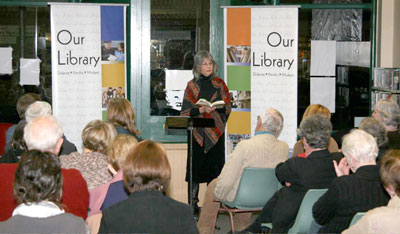
I took the opportunity to warn Mudgee folk of the spreading coal frenzy just to the north of them, not wanting this picturesque district to go the way of the Hunter — but I fear they can’t imagine the devastating effects of so many current mine approvals, let alone proposals and sneaky land buyups in advance of more.
Mudgee has everything going for it, but they will lose it unless the community sees that the threat from unbridled coalmining is not just an issue for greenies: it’s a matter of local survival. Coal is not the smart way to create jobs — just the dirty way.
Photographer Brett Maguire took the pictures on the night; these are just a few. I was impressed with how few double chins he caught — thanks, Brett. He’s obviously a man who knows what women of a certain age want.
 Brett and his wife Aimee are newcomers to Mudgee, seeking a quieter lifestyle, which Mudgee still offers, along with a wealth of cultural, commercial and culinary facilities, not to mention being surrounded by wineries.
Brett and his wife Aimee are newcomers to Mudgee, seeking a quieter lifestyle, which Mudgee still offers, along with a wealth of cultural, commercial and culinary facilities, not to mention being surrounded by wineries.
Julie from local bookshop Books in Mudgee provided books for sale and, as always, I had some great chats with people like Norman Leonard (left) while I signed their copies.
Brett Maguire, BRAW Photography: 0422 278 234.
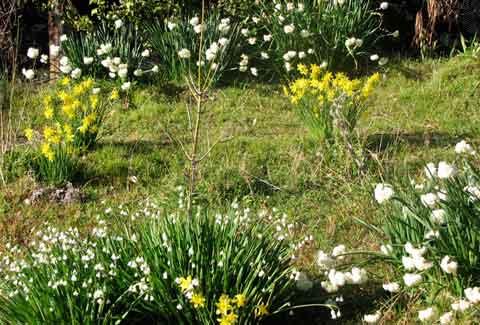 Each year the front yard explodes with the bounty of winter-flowering bulbs: tuberoses, jonquils of at least five different types, including the highly-perfumed and multi-layered clusters of the Erlicheers, and the dainty arches of the snowdrops.
Each year the front yard explodes with the bounty of winter-flowering bulbs: tuberoses, jonquils of at least five different types, including the highly-perfumed and multi-layered clusters of the Erlicheers, and the dainty arches of the snowdrops. The bees didn’t care about terminology as they crawled inside each little green-dotted cup.
The bees didn’t care about terminology as they crawled inside each little green-dotted cup.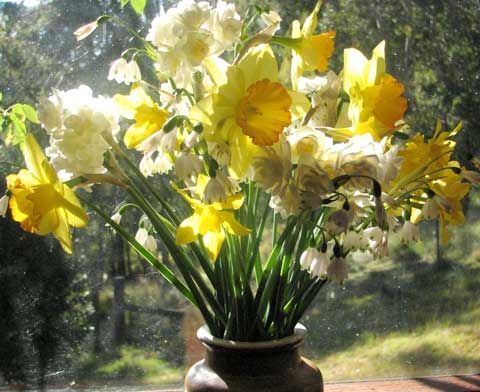 The springtime daffodils are just beginning to unfurl their papery sheaths, so for a few weeks I will have the bounty of both seasons from my bulbs.
The springtime daffodils are just beginning to unfurl their papery sheaths, so for a few weeks I will have the bounty of both seasons from my bulbs.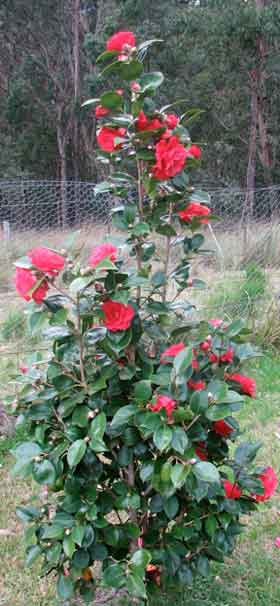 This being August, it’s still winter. Yet there’s plenty of flowers: the wattle is out, the jonquils are in full bloom and the first daffodil has opened to the spring-like warmth of the sun.
This being August, it’s still winter. Yet there’s plenty of flowers: the wattle is out, the jonquils are in full bloom and the first daffodil has opened to the spring-like warmth of the sun.
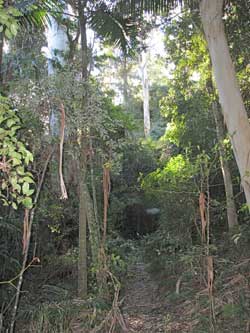 They tempt you to walk into the wild side, but with safety, and to experience the greatly varied vegetation of the surrounding bush.
They tempt you to walk into the wild side, but with safety, and to experience the greatly varied vegetation of the surrounding bush. Robert has chosen the paths to take you through hillside forests and gully jungles, past luminous blue gums and thriving cabbage tree palms, the oldest, wartiest paperbark tree I have ever seen…
Robert has chosen the paths to take you through hillside forests and gully jungles, past luminous blue gums and thriving cabbage tree palms, the oldest, wartiest paperbark tree I have ever seen…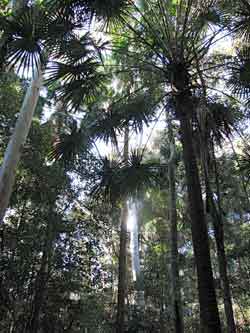 …and battle-scarred eucalypts so tall I can hardly see their tops.
…and battle-scarred eucalypts so tall I can hardly see their tops.
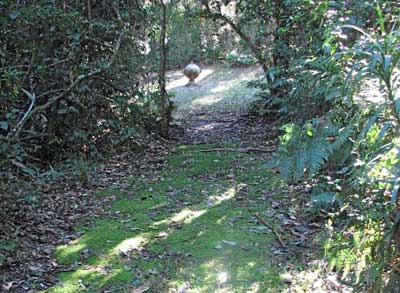
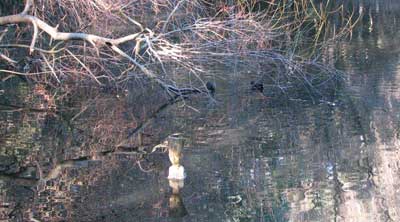
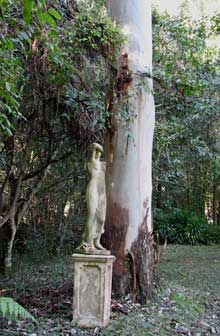 Kangaroos laze in security by Grecian columns; semi-naked ladies swoon by equally ‘palely loitering’ Blue Gums; a multitude of birds other than waterbirds are attracted to the water – such as a flock of White-headed Pigeons.
Kangaroos laze in security by Grecian columns; semi-naked ladies swoon by equally ‘palely loitering’ Blue Gums; a multitude of birds other than waterbirds are attracted to the water – such as a flock of White-headed Pigeons. 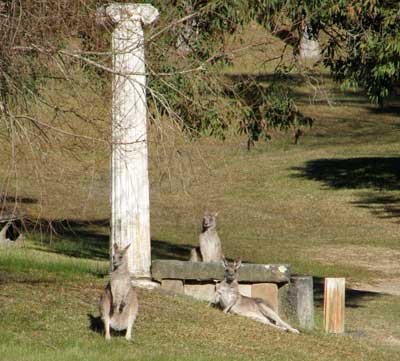
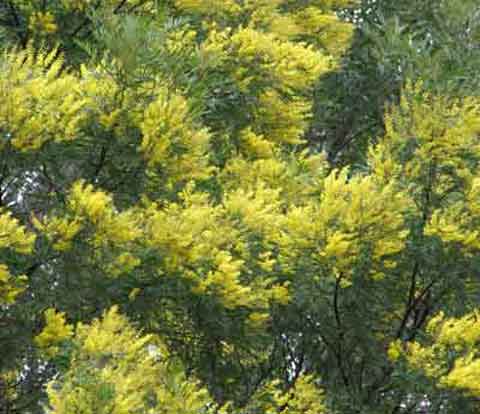
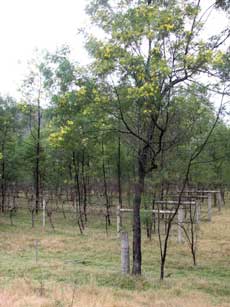
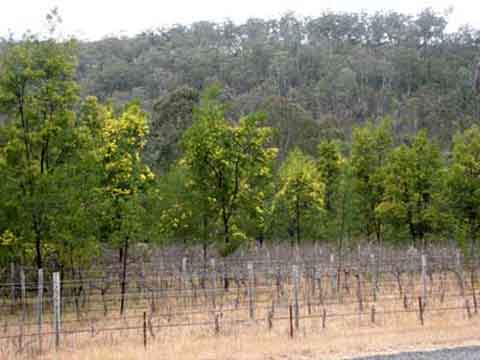


 Brett and his wife Aimee are newcomers to Mudgee, seeking a quieter lifestyle, which Mudgee still offers, along with a wealth of cultural, commercial and culinary facilities, not to mention being surrounded by wineries.
Brett and his wife Aimee are newcomers to Mudgee, seeking a quieter lifestyle, which Mudgee still offers, along with a wealth of cultural, commercial and culinary facilities, not to mention being surrounded by wineries.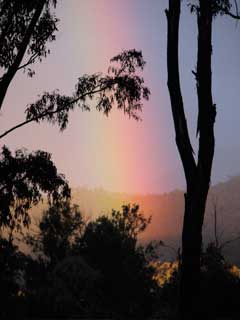 My first day camping in the Warrumbungle National Park ended with showers and a stunning misty sunset, complete with rainbow.
My first day camping in the Warrumbungle National Park ended with showers and a stunning misty sunset, complete with rainbow. 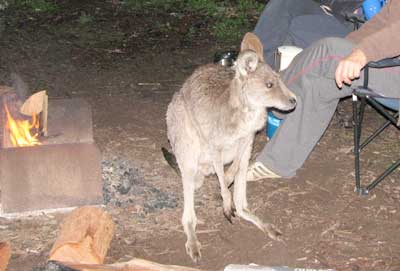
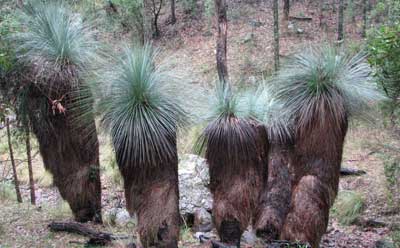
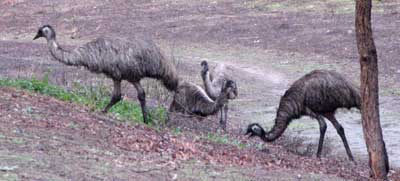

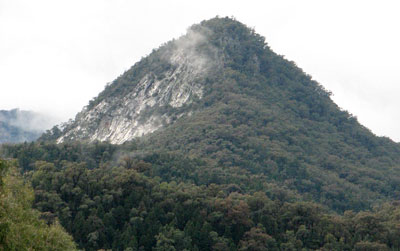
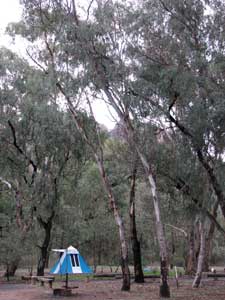 I was able to sneak a few days after recent book talk commitments out west to meet two cousins who were going camping in the Warrumbungle National Park near Coonabarabran, New South Wales,
I was able to sneak a few days after recent book talk commitments out west to meet two cousins who were going camping in the Warrumbungle National Park near Coonabarabran, New South Wales,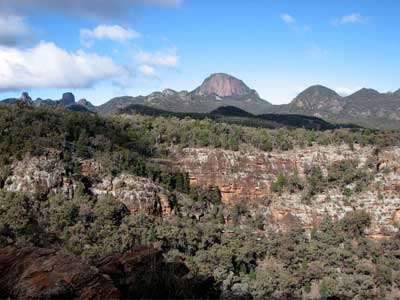

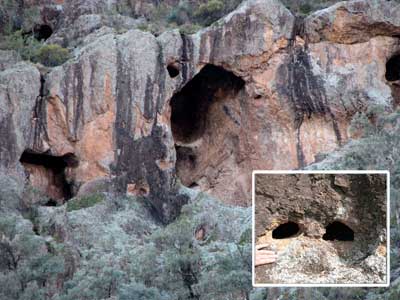
 The online environmental magazine G-Online is worth a visit — it’s full of information about sustainable living, including gardening, cooking, health, travel and family matters, with useful hints and ‘Ask G’ links for your questions. G-Online’s Kate Arneman has posted a review of Mountain Tails —
The online environmental magazine G-Online is worth a visit — it’s full of information about sustainable living, including gardening, cooking, health, travel and family matters, with useful hints and ‘Ask G’ links for your questions. G-Online’s Kate Arneman has posted a review of Mountain Tails —
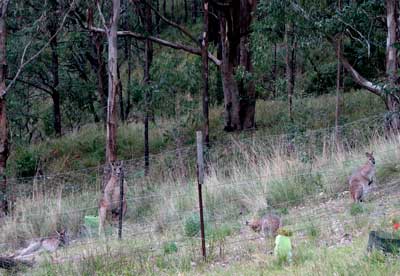
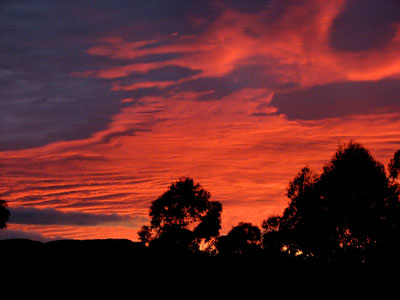
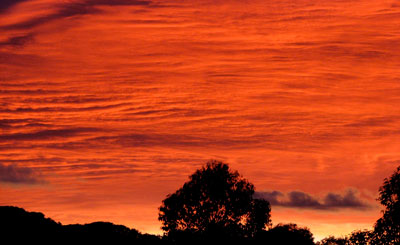
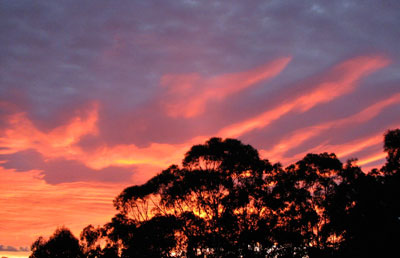
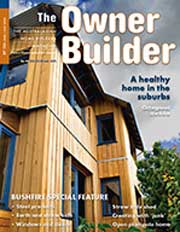 As many of you know, I regularly contribute articles and photos to The Owner Builder magazine. They also stock my books in their online bookshop.
As many of you know, I regularly contribute articles and photos to The Owner Builder magazine. They also stock my books in their online bookshop.